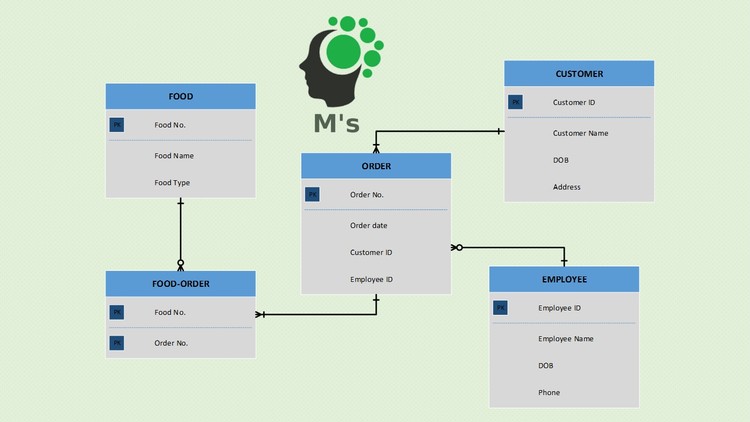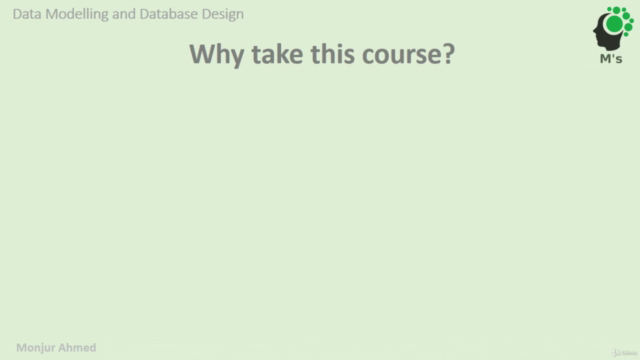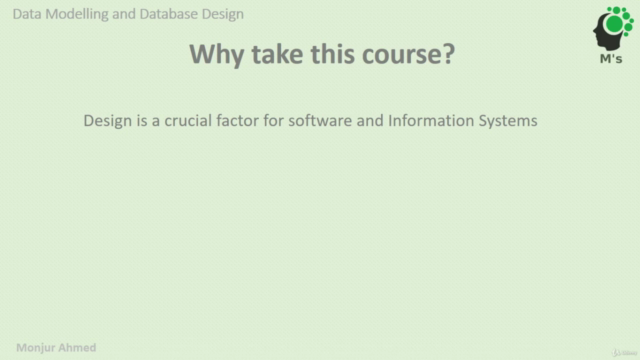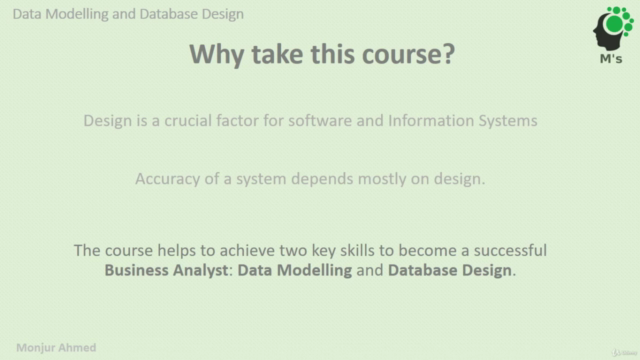Data Modelling and Database Design for Business Analysts
Learn Data Modelling and Database Design to become a successful Business Analyst
4.01 (134 reviews)

759
students
2 hours
content
Dec 2019
last update
$19.99
regular price
Why take this course?
🚀 Become a Data Maestro with Dr. Monjur Ahmed's Course on Data Modelling and Database Design for Business Analysts! 📊
Overall Course Objective:
Master the art of turning data chaos into organized business solutions with our comprehensive online course. By the end of this journey, you will have acquired two critical competencies in data modelling and relational database design, essential skills for a thriving career as a Business Analyst. 🎓
Learning Outcomes (LOs):
- Understand Database and Relational Database: Grip the fundamentals of databases, learning how they store, manage, and retrieve data efficiently.
- Understand Data Modelling: Grasp the principles of translating business requirements into a logical structure that can be used for designing databases.
- Learn to Develop Entity Relationship Diagrams (ERD): Visualize complex data models with ERDs, which serve as blueprints for your database design.
- Design Database: Apply best practices in creating robust and scalable databases tailored to various business scenarios.
- Analyze Real-Life Business/Organizations: Apply your newfound skills by dissecting real-world cases and identifying data requirements to build effective models.
Course Outline:
- Database and Relational Database: Dive into the world of databases, learning about their importance and how relational databases work.
- Tables (Database Tables and Its Elements): Explore the structure of database tables, including columns, data types, constraints, and keys.
- Case Study Analysis (Real-Life Scenario Analysis): Apply your knowledge by analyzing real-world business scenarios to identify data modelling needs.
- Entity Relationship Diagram (ERD): Learn how to create comprehensive ERDs that accurately represent the relationships between different entities within a business context.
- Anomalies (Insert, Update, Delete): Understand the types of anomalies and their impact on data integrity, learning how to mitigate them.
- Dependency (Functional, Partial, and Transitive): Get to grips with various dependency types and their roles in database design.
- Normalization (UNF, 1NF, 2NF, and 3NF): Master the process of normalization to reduce data redundancy and improve database performance.
- Database Development Steps: Follow a structured approach from requirement analysis to final implementation for your database projects.
With Dr. Monjur Ahmed's expert guidance, you'll navigate through each topic with ease, using real-life examples and hands-on activities to solidify your understanding of data modelling and database design. Enroll now and embark on a journey to transform complex data sets into strategic business assets! 🌟
Course Gallery




Loading charts...
Related Topics
1641148
udemy ID
11/04/2018
course created date
20/11/2019
course indexed date
Bot
course submited by